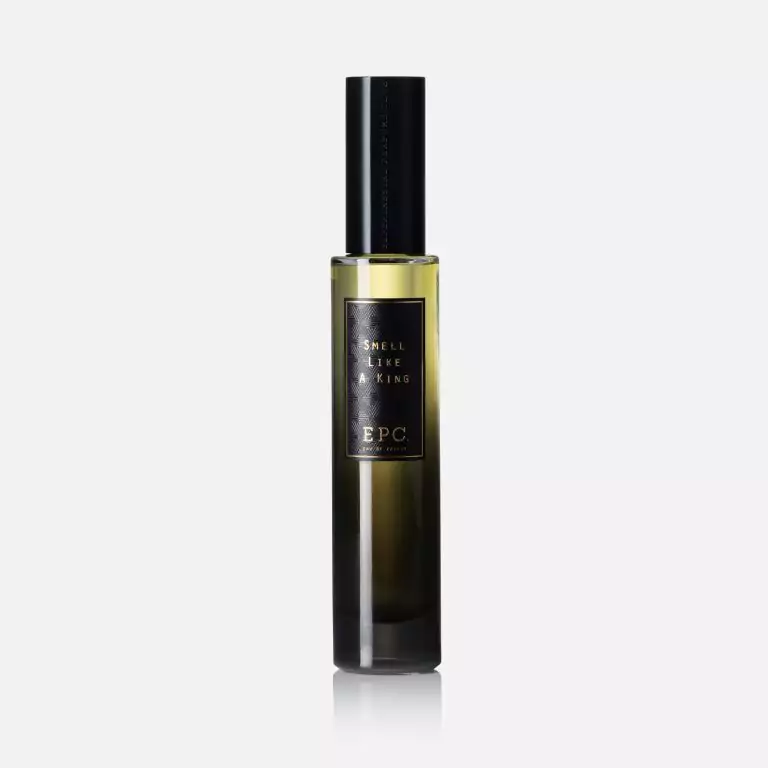Step into the world of niche fragrance, where perfume isn’t just a product—it’s a masterpiece. Forget those mass-produced scents that all start to smell the same. This is about artistry, about rare natural ingredients, about perfumes that tell a story before you even take the cap off.
Once upon a time, fragrance was a luxury reserved for royalty and the elite. Perfumers worked in tiny ateliers, hand-blending oils, spices, and resins into exquisite creations. Fast forward a few centuries, and the perfume industry became a mass-market machine, churning out designer scents with splashy ads but little soul.
And then—bam! The boutique perfume house revival began. Artisans and indie perfumers took back the craft, focusing on quality over quantity, creativity over conformity. The result? Some of the most intoxicating, unexpected, and downright unforgettable scents the world has ever known.
From ancient rituals to today’s cult-favorite brands, the journey of niche perfumes is a scented adventure worth exploring. Ready to dive into its rich, fragrant history? Let’s go!
The Birth of Niche Perfumery: A Craft Rooted in Tradition
Ah, mes chéris, let’s take a little olfactory voyage back in time! The ancient Egyptians were among the first to fall in love with perfume, blending myrrh, honey, and wine into intoxicating elixirs. Scent wasn’t just for pleasure—it was sacred, used in rituals and reserved for the elite. Meanwhile, the Mesopotamians, ever the innovators, developed early distillation techniques to extract fragrance from plants and resins. Perfume was already a symbol of status, power, and mystery.
Fast forward to ancient Greece and Rome, where perfumery became a true artisanal craft. Greek philosophers believed scents had medicinal properties, while the Romans—oh là là—took luxury to another level, drenching themselves in rare natural ingredients like musk oil and exotic florals. Perfumers, much like today’s boutique perfume houses, worked with painstaking precision, blending oils and botanicals to create bespoke fragrances for the aristocracy.
For centuries, perfume remained the privilege of royalty and the elite. In the grand salons of Paris, the court of Versailles was drenched in fragrance, with Marie Antoinette herself obsessed with orange blossom and tuberose. This legacy lives on in today’s niche perfumery, where brands like J.F. Schwarzlose Berlin and Penhaligon’s continue the tradition of high-quality perfume oils and masterful craftsmanship. The world may have changed, but the magic of artisanal scent remains.
The Rise of Mass-Produced Perfumes and the Niche Rebellion
Oh, mon dieu, the 19th century brought a revolution—not just in politics but in perfume! Industrialization changed everything, turning fragrance from an exclusive luxury into a mass-market commodity. With steam distillation and new extraction methods, perfumers could now produce scents at lightning speed. Suddenly, perfume was no longer just for the aristocracy; even the bourgeoisie could have their signature scent.
But with accessibility came a loss of artistry. By the 20th century, designer fragrances and celebrity perfumes flooded the market. Fashion houses like Chanel (ah, the eternal No. 5!) used their branding power to launch blockbuster scents, while the 2000s brought an explosion of celebrity fragrances—everyone from Britney Spears to Rihanna had a bottle with their name on it. While these perfumes were everywhere, they often relied on synthetic blends and mass appeal, missing the depth and soul of niche perfumery.
Merci, but non merci! The niche perfume movement emerged as a rebellion against this fragrance fatigue. Indie perfumers, much like the artisans of the past, focused on high-quality, often natural ingredients, crafting scents that were bold, personal, and utterly unique. No generic floral-fruity mashups here—just storytelling in a bottle. Today, niche perfumery is having a renaissance, proving that true artistry never goes out of style.
Olfactory Artistry: What Makes Niche Perfumes Special?
Mes amours, let’s talk about what makes niche fragrance so irresistible! First, it’s all about craftsmanship. While mainstream perfumes chase trends, niche perfumers take their time, using traditional techniques like maceration and enfleurage to extract the purest essences. The result? Scents that feel rich, layered, and oh-so-luxurious. Think natural ingredients like smoky oud, rare iris, and sun-drenched fig leaves—nothing synthetic, nothing ordinary.
Then, there’s the storytelling. A true niche perfumer doesn’t just mix notes; they compose poetry in scent form. One whiff might transport you to a Parisian café on a rainy afternoon, another to the lavender fields of Provence at sunset. These perfumes unfold on the skin, shifting from fresh top notes to deep, sensual bases, creating an olfactory journey as unique as the wearer. They aren’t just perfumes—they’re emotions, bottled.
And let’s not forget the exclusivity. Unlike those department store bestsellers, boutique perfume houses craft their scents in small batches, making each bottle feel like a secret treasure. You won’t find these perfumes on every vanity, and that’s exactly the point. True luxury isn’t about following the crowd—it’s about finding a scent that whispers your name. And in the world of niche perfumery, that’s exactly what you get.
The Cult Following: How Niche Fragrances Took Over
Niche fragrances have captivated perfume lovers with their originality, craftsmanship, and exclusivity. Independent perfumers and boutique fragrance houses focus on artisanal savoir-faire, using high-quality ingredients and unconventional scent combinations. Unlike mass-produced perfumes, these small-batch creations allow for greater artistic freedom, often telling a personal story or evoking a specific memory. French perfume houses like Serge Lutens and Frédéric Malle have set the standard for niche perfumery, offering parfum de niche that feels both luxurious and deeply personal. This movement represents a return to the roots of perfumery, where scent is not just a product but a form of artistic expression.
Social media has played a major role in making niche perfumes a global phenomenon. Platforms like TikTok and Instagram have turned perfume collecting into a cultural obsession, with #PerfumeTok racking up billions of views. Fragrance lovers share their collections, review rare finds, and bring niche brands into the mainstream. A single viral post can propel an unknown perfume house into worldwide recognition, proving that digital influence is just as powerful as traditional marketing. This shift has democratized the fragrance industry, allowing smaller brands to compete with legacy maisons without massive advertising budgets.
For many, niche perfumes offer something designer fragrances no longer do—individuality. While luxury brands mass-produce scents designed to please the widest audience, niche houses craft fragrances for those seeking uniqueness. Notes like smoky oud, figue verte, and leather create bold, complex compositions that stand out in a crowd. Whether inspired by la vie parisienne or distant landscapes, these scents tell stories, making them more than just perfumes—they are wearable art.
Niche Perfume’s Role in the Luxury Market Today
The luxury fragrance world has transformed as niche perfumery captured the hearts of discerning consumers seeking something beyond department store scents. Major corporations have taken notice, with Estée Lauder acquiring Le Labo, LVMH purchasing Maison Francis Kurkdjian, and Puig taking over Byredo. Despite these corporate investments, most acquired brands have managed to preserve their creative vision and artisanal appeal. This success has influenced mainstream fragrance development, with even brands like Ax launching premium collections. Niche brands walk a delicate line between growth and exclusivity, often using direct-to-consumer models and selective distribution through carefully chosen boutiques and pop-ups. Premium pricing remains a hallmark, with ultra-luxury offerings like Amaffi selling crystal-bottled scents for thousands of dollars. As the sector expands, challenges emerge: scaling production while maintaining quality, finding visibility in retail spaces dominated by conglomerates, and preserving authenticity after acquisition. Consumers increasingly question whether corporate-owned niche brands truly maintain their commitment to craftsmanship. Yet the future looks promising as these brands embrace sustainability in ingredients and packaging, invest in digital experiences, and excel at emotional storytelling that creates meaningful connections. By 2025, niche perfumery has secured its position as a luxury status symbol, with success depending on balancing commercial growth with the creativity and uniqueness that initially distinguished these fragrances from mass-market alternatives.
Trends Shaping the Next Generation of Niche Perfumes
The niche perfume industry is evolving rapidly, blending tradition with innovation to create exciting new possibilities. Gender-neutral fragrances from brands like Boy Smells and Veronique Gabai are replacing outdated marketing, focusing instead on personal expression and individuality. Meanwhile, indie beauty brands are making luxury more accessible without sacrificing quality, telling personal stories through affordable scents. Nature-inspired fragrances are gaining popularity as biophilia trends grow, with aquatic, woody, and mossy notes capturing our desire to reconnect with the natural world. Classic ingredients like rose and lavender are making comebacks with modern twists, while younger consumers drive demand for playful body mists that match their moods and identity. The gourmand category is expanding beyond vanilla to include fun notes like gummy candy and marshmallow. Sustainability has become non-negotiable, with brands adopting ethical sourcing, supporting local communities, and creating transparent supply chains. Eco-friendly packaging solutions utilizing recycled materials and refillable designs are now standard practice as companies educate consumers about environmental impact. Technology is revolutionizing the experience too, with AI enabling personalized scent discovery and creation. Green chemistry is producing fragrances that are both beautiful and environmentally responsible. This perfect blend of artistry, ethics, and innovation is creating a new generation of niche perfumes that appeal to conscious consumers seeking unique, high-quality scents with purpose.
Embracing the Art of Niche Perfumery
The world of niche perfumes offers a refreshing escape from ordinary scents. By exploring these artistic creations, you’ll discover fragrances that truly reflect your personality and create lasting impressions. Don’t be afraid to step away from mainstream options and explore the smaller, passionate brands that pour their hearts into each bottle. Visit specialty boutiques, request samples, and take your time experiencing how these unique scents develop on your skin throughout the day.
Remember that finding your signature niche fragrance is a personal journey worth taking. The right scent becomes part of your identity and creates memories that last a lifetime. Whether you’re drawn to sustainable practices, artisanal craftsmanship, or simply want something no one else is wearing, the expanding world of niche perfumery has something special waiting for you.
If you’d like personalized recommendations or have questions about specific niche perfume houses, feel free to reach out to me at darina@atelier-niche.com.
Frequently Asked Questions About Niche Perfumes
1. What exactly makes a perfume “niche”?
Niche perfumes are created by independent or boutique houses that focus on artistry, high-quality ingredients, and unique scent combinations. Unlike mainstream fragrances, they’re produced in smaller batches, prioritize creativity over mass appeal, and often tell a specific story through scent.
2. Are niche perfumes worth their higher price?
Yes, the higher price typically reflects better ingredients, more concentrated formulas, and artisanal production methods. Niche perfumes often last longer on the skin and evolve more interestingly throughout the day, making them a worthwhile investment for fragrance enthusiasts.
3. How do I start exploring niche perfumes without spending too much?
Begin with discovery sets or sample vials offered by many niche houses. Visit specialty perfume boutiques that offer testing, attend perfume events, or join online communities where members swap samples. This allows you to experience multiple scents before committing to a full bottle.
4. Can I find sustainable and ethical niche perfumes?
Absolutely! Many niche brands lead the way in sustainability, using ethically sourced ingredients, eco-friendly packaging, and responsible production methods. Look for brands that openly share their sourcing practices and environmental commitments.
5. How long do niche perfumes typically last?
Niche perfumes often contain higher concentrations of fragrance oils (typically 15-30%), which means they generally last longer than designer fragrances. Most will last 6-8 hours, with some lingering for 12+ hours depending on the specific notes and your skin chemistry.
6. What’s the difference between niche and designer perfumes?
Designer perfumes are created by fashion houses or big corporations, marketed widely, and produced in large quantities. Niche perfumes come from independent houses focused solely on fragrance, emphasize artistic expression over commercial appeal, and are distributed through select channels.
7. How do I know if a niche perfume is still “truly niche” after being acquired by a larger company?
Look for consistency in the brand’s approach to ingredients, creative direction, and quality after acquisition. Many acquired brands maintain their artisanal processes and creative freedom despite corporate ownership. Customer reviews and fragrance community feedback can provide insights into any changes.
8. Are gender-neutral fragrances a new trend in niche perfumery?
While marketed as a modern concept, truly artistic perfumery has always transcended gender. Many classic niche fragrances were never specifically gendered. The current trend represents a return to perfume’s roots where scent preference is personal rather than gender-defined.
9. What are some emerging niche perfume brands worth watching?
Brands like Boy Smells, Veronique Gabai, and AKT London are bringing fresh perspectives to niche perfumery with innovative approaches to sustainability, accessibility, and creative expression. The most exciting new houses often start with distinct viewpoints and authentic storytelling.
10. How can I learn to appreciate complex niche fragrances if I’m used to mainstream scents?
Start by understanding basic fragrance families and common notes. Practice mindful smelling—take time to notice how scents evolve from first spray through drydown. Keep notes about what you try and how it makes you feel. Consider joining a perfume appreciation workshop or following fragrance educators online who can guide your sensory development.

Darina Doroshenko is the Managing Director of Atelier Niche; specializing in bringing exclusive niche perfume and skincare brands to the UK, Europe, CIS, and Middle East. With over 18 years of experience, she has held top positions at prestigious brands like Chanel, Givenchy, Shiseido, Penhaligon’s, L’Artisan Parfumeur, Serge Lutense, and Roja, overseeing all channels of distribution.



0 Comments